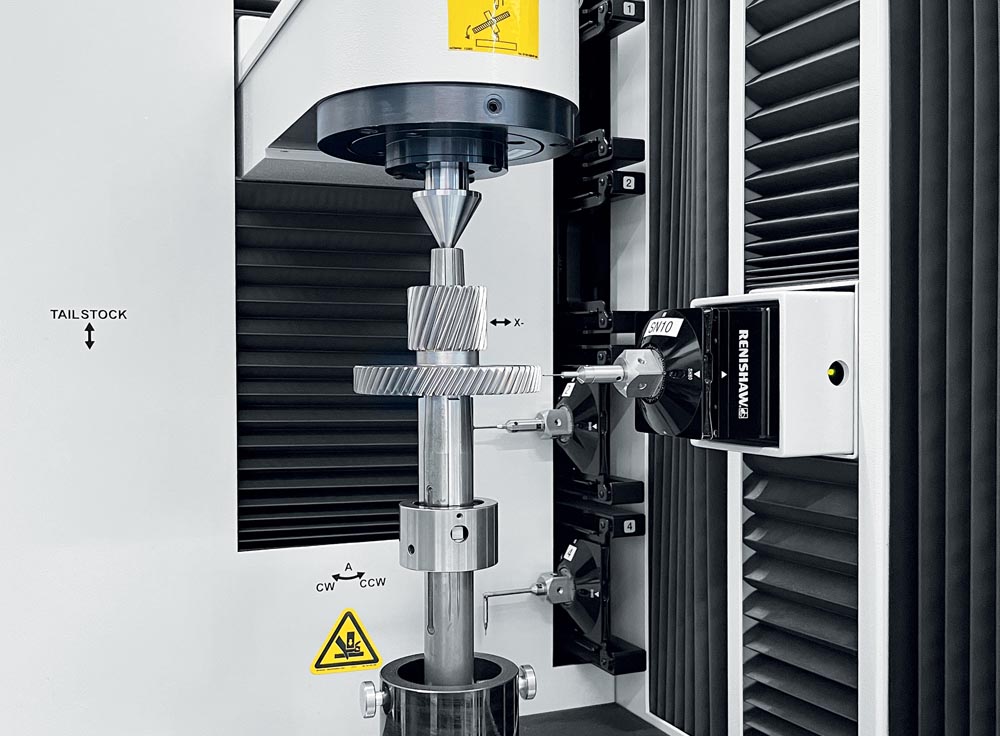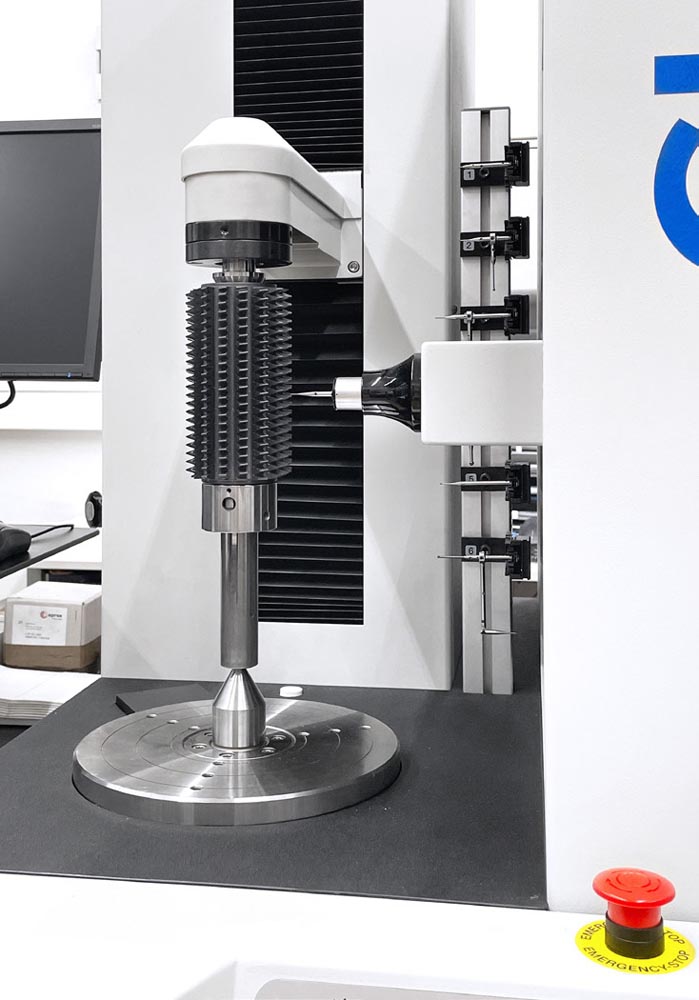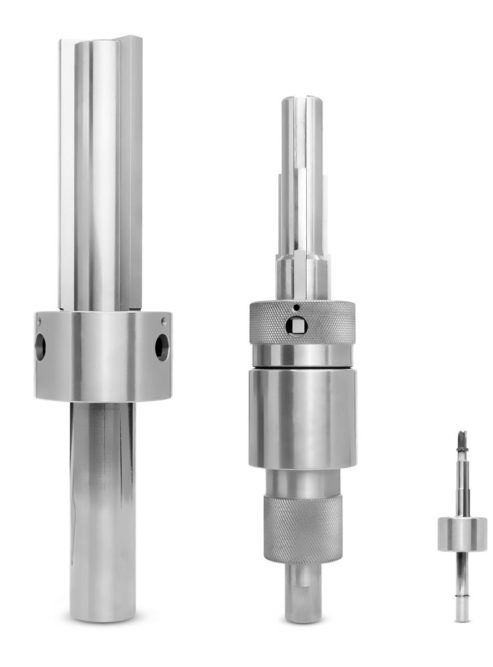Inspection Workholding: Simply Perfect
Gleason LeCount Adjustable Expanding Mandrels offer a fast, flexible and amazingly simple solution for metrology applications where speed, accuracy and repeatability are paramount
Gleason LeCount Expanding Mandrel models accommodate an exceptionally wide range of precision clamping applications, both in the quality lab and on the production floor. Twelve standard models cover workpiece bore sizes ranging from 6.35–177.8 mm (0.25–7.00 in.) in diameter.
Keep it simple. More often than not it turns out to be the best course of action in life and on factory floors. Take, for example, Gleason LeCount Expanding Mandrels. You’ll find them in quality labs around the world, delivering reliable, repeatable workholding performance for the inspection of gears and other bore-type workpieces. Quality labs today are at the epicenter of the drive to produce increasingly complex, high-precision parts, while at the same time racing to take time and cost out of the inspection process. Counter-intuitively, perhaps, the best workholding solution to meet these ambitious new inspection requirements turns out not to be something new and more complex—but the simplest solution of all: Gleason LeCount Expanding Mandrels.

Gleason LeCount Expanding Mandrels seem almost tailor-made for the rigorous demands of today’s quality labs. They deliver the extreme accuracies required of high precision workpieces with 2.5 microns (0.0025 mm/0.0001 in.) TIR or better. Their simple design makes it easy for a technician with even minimal experience to ensure a precise, repeatable load/unload of the workpiece in a matter of seconds.
Patented Performance
While their patented design has been in existence for more than a decade, the family of Gleason LeCount Expanding Mandrels seems almost tailor-made for the rigorous demands of today’s quality labs. First, they’re capable of delivering the extreme accuracies required of today’s high-precision workpieces: 2.5 microns (0.0025 mm/0.0001 in.) TIR or better. Most importantly, their design makes it a cinch for a technician or machine operator with even minimal experience or training to ensure a precise, repeatable load/unload of the workpiece in a matter of seconds. Finally, an entire family of just 12 standard precision mandrel models spans the widest possible range of workpiece bore sizes—from 6.35 mm to 177.8 mm (0.25 in. to 7.00 in.) in diameter—thus further simplifying operation and reducing workholding investment.
Simple Perfection
Any operator will find that ‘getting it right the first time’ is a remarkably simple process using this easy-loading mandrel. The patented mandrel design incorporates three parallel expanding jaws that slide uniformly up (expanding) or down (contracting) on inclined guideways. Any workpiece bore size within its range can be accommodated by each mandrel. For example, the popular Type A mandrel, designed for an extra wide range, includes models designed for the most popular bore sizes common to most automotive transmission gears. Models are available to accommodate bore-size clamping ranges of anywhere from 12 mm to 25 mm or greater. Note that the extreme accuracy of the device over this entire adjustable clamping range does not change. It is derived from controlled, precision manufacturing that guarantees concentricity of 0.0025 mm (0.0001 in.) TIR over the entire range of the expansion.
To load, the operator simply lowers the workpiece bore over the jaws, which remain parallel with the bore throughout. The jaws provide three points of centering contact on the bore and act as an internal expanding chuck on any bore within the size range of the mandrel. As the workpiece is lowered, the operator moves a sleeve up along the tapered guideways in the direction of the round, the short end of the mandrel, which acts to expand the jaws and lightly grip the bore. A light tap on this end of the mandrel then further expands the jaws and firmly secures the workpiece without any additional manual tightening or the use of a tool. For unloading, a light tap on the opposite end of the mandrel is all that’s needed to release the workpiece.
Expanding the Possibilities
This product’s design can be easily adapted to a wide range of applications. The type C model, for example, is very compact, making it ideal for the inspection of a narrower range of dedicated parts. The type H, with its extra-long jaws and narrow expansion range, is well-suited for the requirements of hob inspection. Additionally, the series includes Gleason LeCount Spline Mandrels, since not every part has smooth bores. These mandrels function identically but have the pitch diameter of a splined workpiece ground into the contact edge of the three jaws, with spacing between the jaws adjusted to accommodate the workpiece. They can also be made to contact the major and minor diameters of the workpiece.
Additionally, the system can be purchased with a dedicated part locator, which allows the operator to position heavier workpieces or dedicated parts more easily in the same, precise, repeatable location each and every time one’s loaded.

The LeCount Type H model, with its extra-long jaws and narrow expansion range, is well-suited for the requirements of hob inspection. Additionally, the series offers spline mandrels, since not every part has smooth bores.
Type G for the Production Floor
Since they work so well in the lab, why not bring them onto the production floor? Gleason answered this question with the development of the LeCount Production "G" (Grinding) Mandrels, which now bring this highly desirable speed, accuracy, expansion range and robust clamping to the production floor. The G is adapted to the factory floor with, among other design modifications, a sleeve that’s sealed from dust, oil, and contamination. They’ve proven to work exceptionally well in a number of applications, including on lathes and turning centers to help reduce chatter or distortion during heavy metal removal. They are also in use in the production of smaller gears with smooth bores and in gear prototyping work. In these applications, a Gleason workholding fixture can be designed to clamp on the G mandrel itself, which then allows for stronger clamping force and faster changeover times than possible with a conventional workholding solution. Bore sizes range from 17.00–96.00 mm (0.670–3.80 in.) with accuracies and repeatability of 0.005 mm (0.0002 in.) TIR.
Trust, and Verify
Over time, even the best-made workholding will experience some wear and tear. The impact on accuracy and repeatability can be small and measured in microns. Nonetheless, Gleason can help customers to continuously meet and exceed the most stringent quality required of their LeCount Mandrels. With the support of the latest quality assurance equipment Gleason verifies that workholding components meet or exceed customers’ requirements. Gleason offers global service and support capabilities, ranging from applications engineering to extensive inventories of high-quality OEM replacement parts, ensuring that Gleason workholding systems are performing at the highest levels—anywhere in the world.


